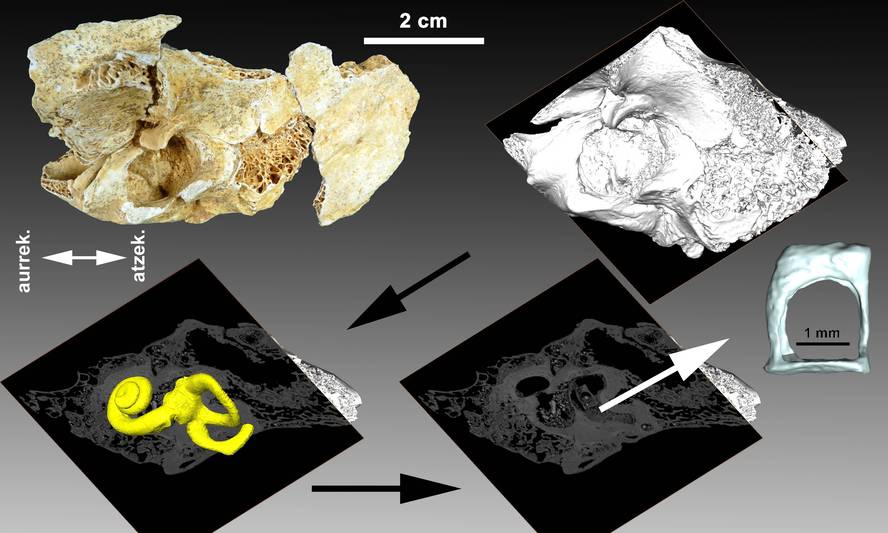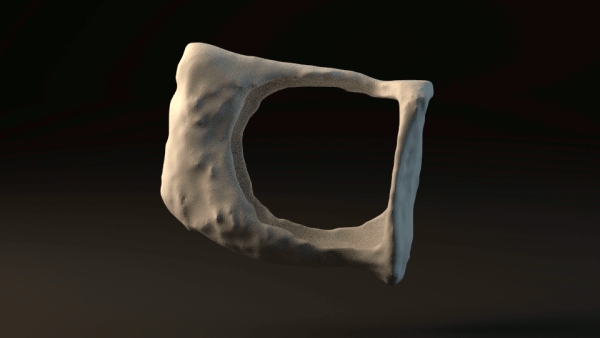The case of the Neanderthal child LF8
Ikerbasque research fellow
Estratigrafia eta Paleontologia saila, Euskal Herriko Unibertsitatea

Located southwest of France, Dordogne is a privileged territory in terms of archaeological sites. One of them, the coat of La Ferrassi, is a very important deposit, since in its stratigraphic sequence appear occupations of the Musterian era and of the Upper Paleolithic. In the Musterian layers were found skeletons of seven Neanderthals, two superior (one woman and one man) and five children of different ages.
First skeleton of the elder La Ferrassie 1, XX. It was discovered at the beginning of the 20th century and the last, La Ferrassie, 8 years old (LF8), was excavated in 1970 and 1973. In an article we have just published in the Journal of Human Evolution, we have described the 47 new fossils corresponding to the recently found Neanderthal baby LF8. In two museums, Muséum national d'Histoire naturelle (Paris) and Musée d'Archéologie nationale (St. Germain-en-Laye), we find these fossils in the sediment bags of the excavations of 1970 and 1973.
Among these fossils are fragments of skulls, jaws, vertebrae, ribs and phalanges of hands, among which stands out a temporary to the almost complete left, which housed a small treasure: a complete burial. The ointokis, the hammer and the anvil are the bones of the middle ear, the small bones that transmit the sound, the smallest of the human body. Rarely appear in deposits.
We discovered the ointoki thanks to a temporary bone scanner on the AST-RX platform of the Paris Museum of Natural Sciences. The first objective of the microscanner was to investigate the internal structures (coquilla and semicircular tubes) that are found in all the pretension of the storm, so it was done with the greatest possible rigor.
In the microscanner, step by step the object to be scanned is rotated and in each step an x-ray is obtained. All X-rays are processed using very powerful computers and cross sections of the object are made. Other densities appear in these cross-sections with different shades of the gray scale, and with other computer programs the object can be virtually reconstructed.
At the time of the realization of the scanner, it was verified that inside the storm there was a complete entorpado, and through transversal sections, the pixels that filled the gap were selected to obtain a three-dimensional object. The same was done with the inner ear, but in this case these structures were negative, that is, when they were hollows in the petrosa part of the temporal bone, they were filled virtually to build a three-dimensional object. This methodology is used both in the small hollows of the petrose and in the reconstruction of a greater hollow of the brain.

The importance of this new Neanderthal ointoki is twofold: on the one hand, the huesecillos of the middle ear are fossils that are rarely found, and this is the most complete discovery of the Neanderthal period; on the other hand, the morphological research of the fossil has confirmed that the anatomical differences between our species and the Neanderthals can also appear in the smallest bones.
At the moment, it is not possible to know the influence of these morphological differences in the ear. However, auditory studies have been conducted at the site of the Sima de los Huesos de Atapuerca. These studies show that the listening capacity of the hominids was similar to that of modern men of today 430.000 years ago, that is, they were able to listen to the same frequencies, and we have a remarkable specialization of listening in certain frequencies comparing with the rest of primates. Therefore, it seems logical that the listening capacity of the Neanderthals, related to the human beings of the Sima de los Bones, is similar to ours. According to these latest research, and due to the relationship between ear and language, the first steps of the human being in the linguistic field are very old.
SOURCES: Balzeau, A., Grimaud-Hervé, D., Détroit, F., Holloway, R.L. Combès, B., Prima, S., 2013 First description of the endocast of Cro-Magnon 1 and study of brain variation and evolution in anatomically modern Homo sapiens. Bull. Mém. Soc. Anthrop. Paris 25, 1-18.Martínez, I., Rosa, M., Quam, R., Jarabo, P., Lorenzo, C., Bonmatí, A., Gómez-Olivency, A., Grace, A., Arsuaga, J.L. 2013 Communicative capacities in Middle Pleistocene humans from the Sierra de Atapuerca in Spain. Quaternary International 295, 94-101. DOI:dx.doi.org/10.1016/j.quaint.2012.07.001Gómez-Olivency, A., Crevecoeur, I., Balzeau, A., in press. La Ferrassie 8 Neandertal child reloaded: new remains and re-assessment of the original collection. Journal of Human Evolution. DOI: 10.1016/j.jhevol.2015.02.00





